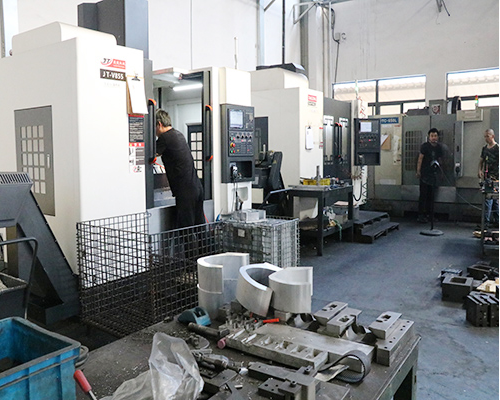The cleaning and finishing of aluminum and aluminum alloy forgings are of great significance in the process of aluminum alloy forging. Aluminum alloy and aluminum have low hardness, poor fluidity, strong adhesion to molds, and are prone to defects such as bending, cracking, and peeling in forgings. If these defects are not eliminated in a timely manner, the forged parts will continue to develop during the second forging, leading to the scrapping of the forged parts. The cleaning process after forging is as follows: after forging, remove burrs on the saw blade or cutting die, cut the edges of the forging, and then clean it in an acid pickling tank. Inspect the defects of the forgings after cleaning, and repair the exposed defects on the forgings using tools such as milling cutters and air shovels. The repaired part should have a smooth transition with the surrounding area to avoid folding caused by re forging. Except for ultra hard aluminum, all parts of aluminum alloy forging are cold cut and die cut. For large die forgings, burrs are generally cut with a band saw. Remove the flat surface of forgings through stamping or mechanical processing. For aluminum alloys with high alloying degree, burrs after forging cannot be removed for a long time because aging may precipitate strengthening phases and the cutting edge may tear. Aluminum ingots are usually cooled in air after forging, but in order to remove burrs in a timely manner, they can also be cooled in water.






